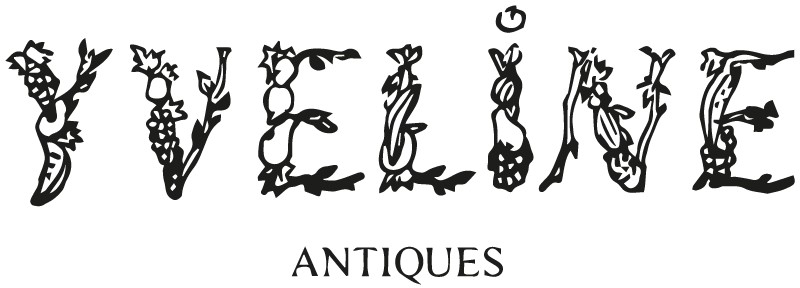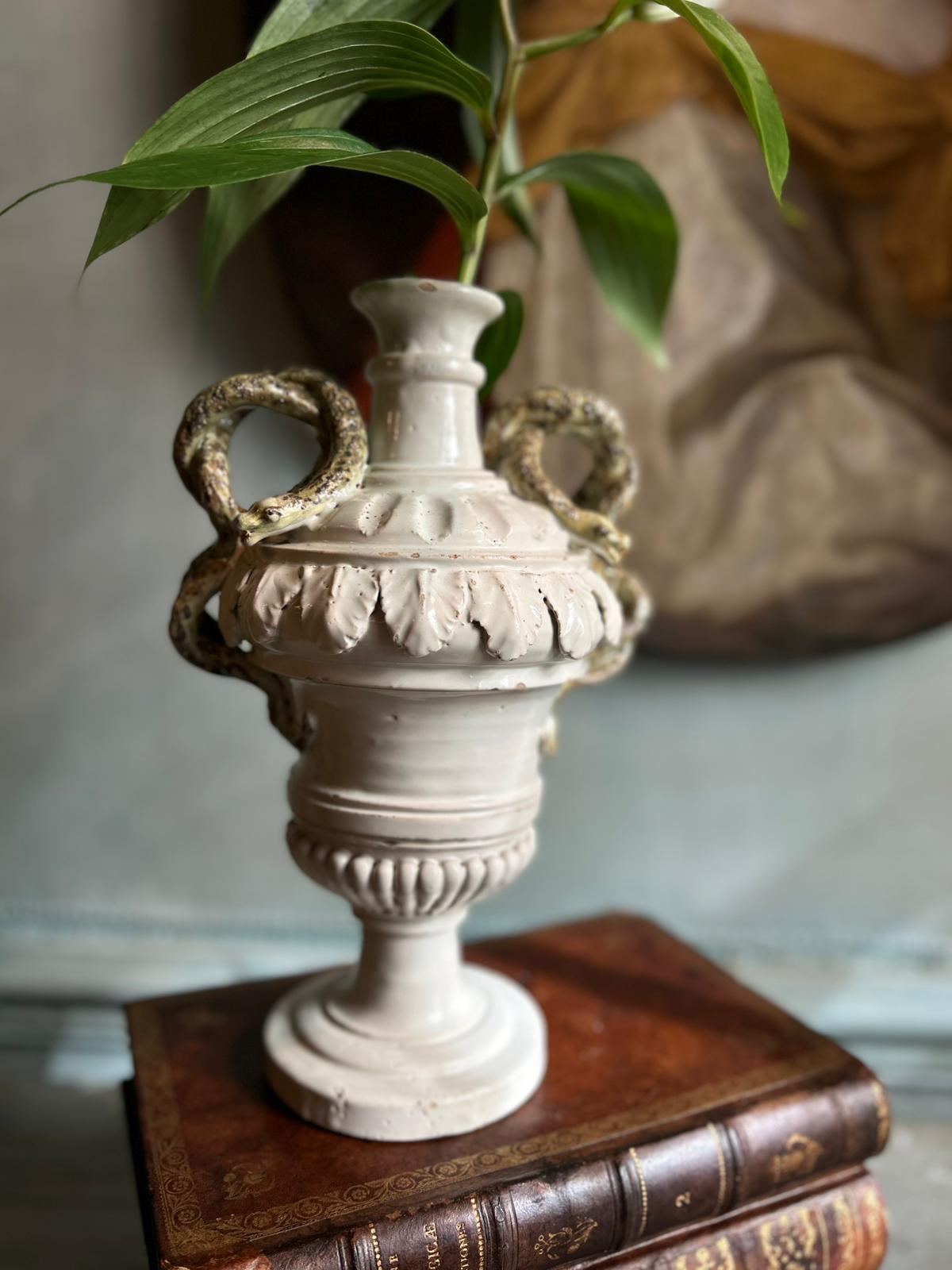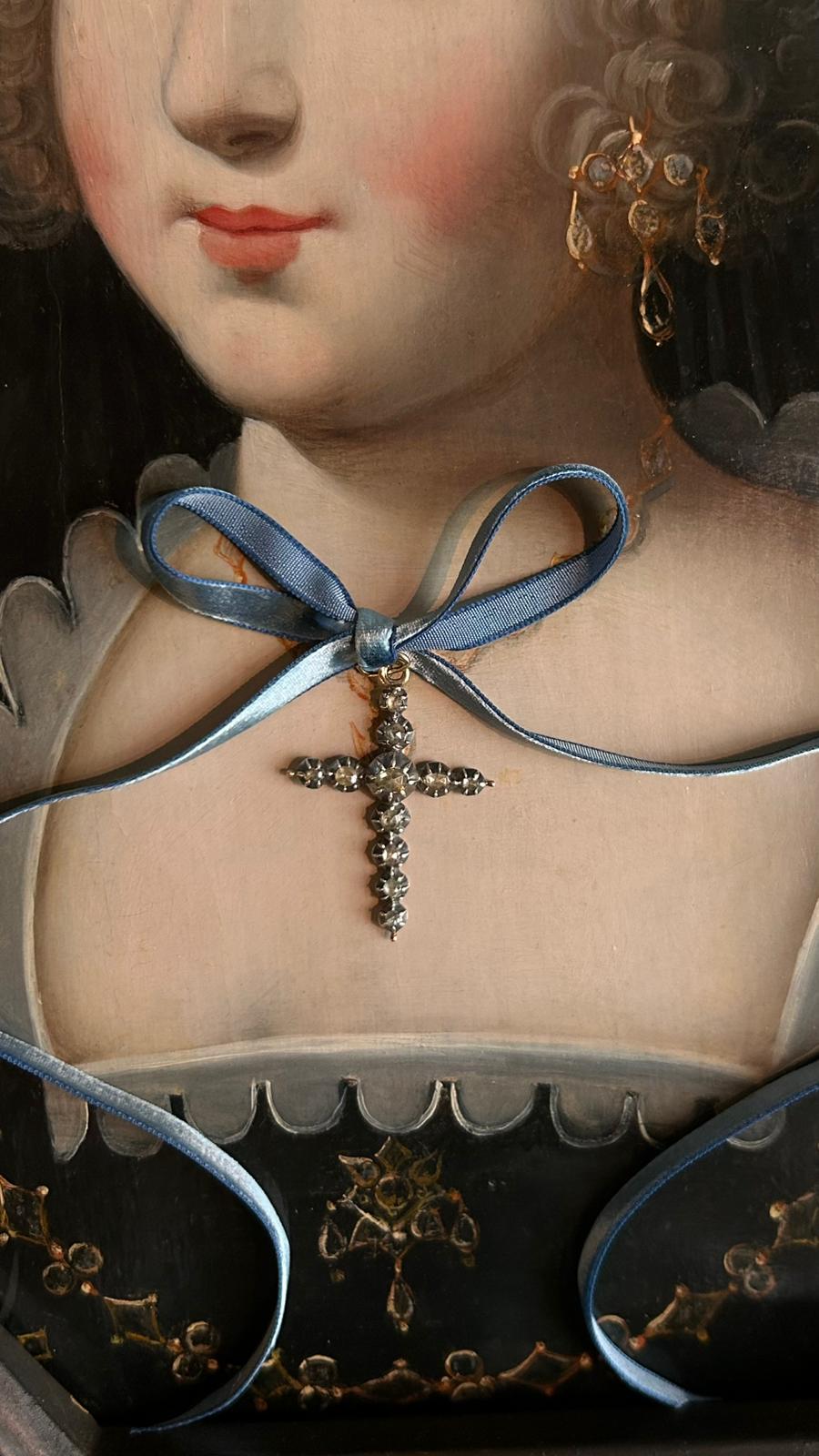A small “indiscreet” bollard consisting of a three-seater seat upholstered in animal hair in the traditional style, all on a network of twenty stiff springs… a triple backrest also separated by three padded, buttoned rails topped with a Medici vase in gilded wood, entirely covered in Rubelli jacquard fabric, with Declercq trimmings.
Napoleon III period, 19th century
Richly carved and gilded wooden mirror with rocaille-patterned glazing beads and mercury glass.
Louis XV period, 18th century
Provence, France
Oil on canvas, “Portrait of a Nobleman with His Dog,” the coat of arms at the top left with the motto in old French “Hope in God.”
Is this a nobleman in the entourage of King Charles II of England?
17th century
French School?
Oil on panel “Portrait of Lucelle”, Latin inscription: “Lucelle aetatis 16”: Lucille at the age of 16.
Lucylle, or Lucille, is a given name of Arabic and Latin origin derived from “lux,” meaning “light,” celebrated on December 13.
17th century
France
White glazed earthenware vase with snake-shaped handles.
18th century
Gold and silver cross set with rhinestones.
Provence, France
19th century
18k gold cross with enamel and rose-cut diamonds, engraved with the vintage motifs.
Total gross weight: 6.10 grams
First half of the 19th century
Provence, France
Important enameled cross in 18k gold and silver, with old-cut diamonds and amethysts.
Louis-Philippe I (1830-1848)
Provence, France
18k gold pendant adorned with a miniature depicting Cupid forging his arrows of love, a rare subject, and a pearl.
Second half of the 19th century
France
Oil on canvas “The Child and His Dog” signed lower right by Richard Flatters (1822-1876).










